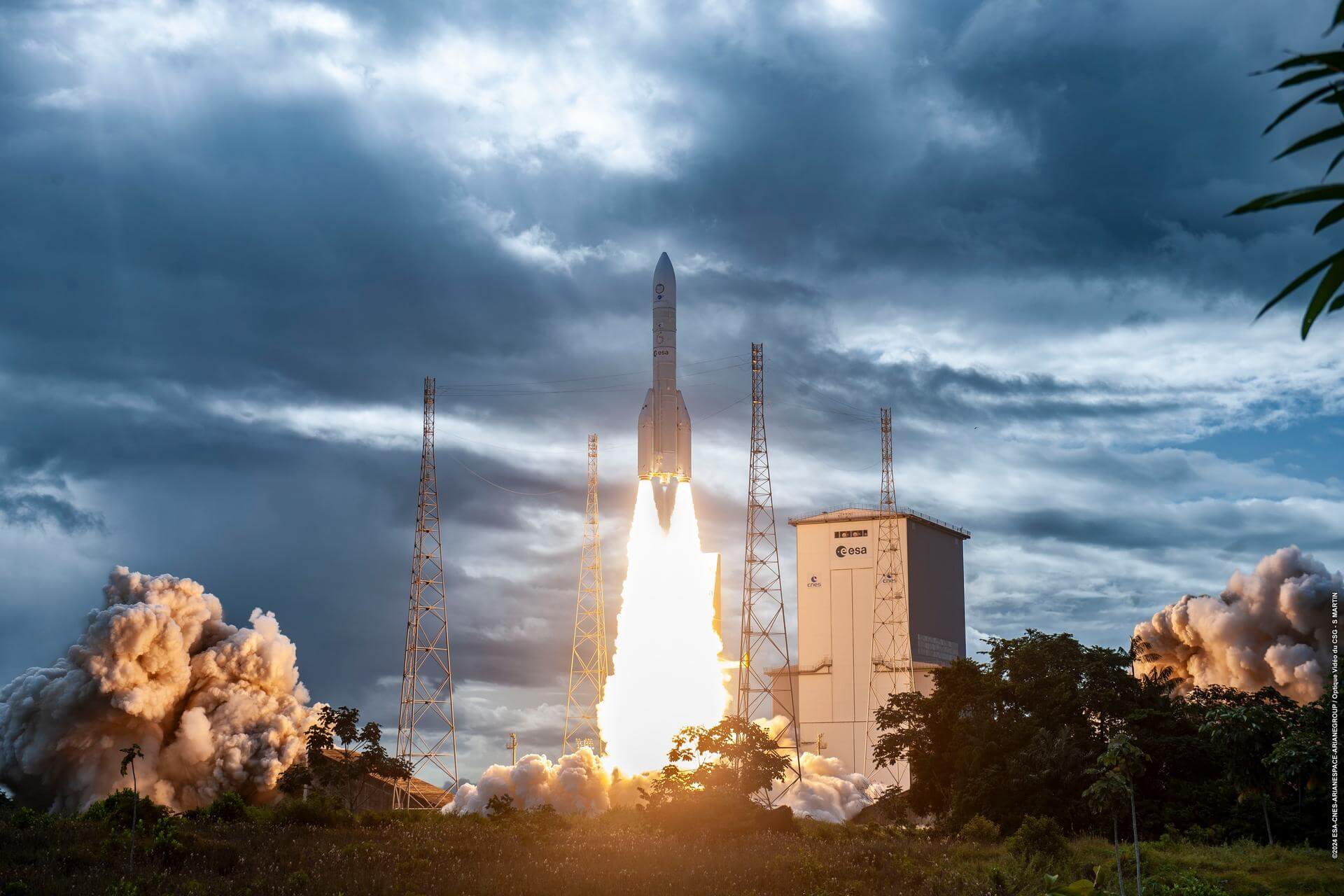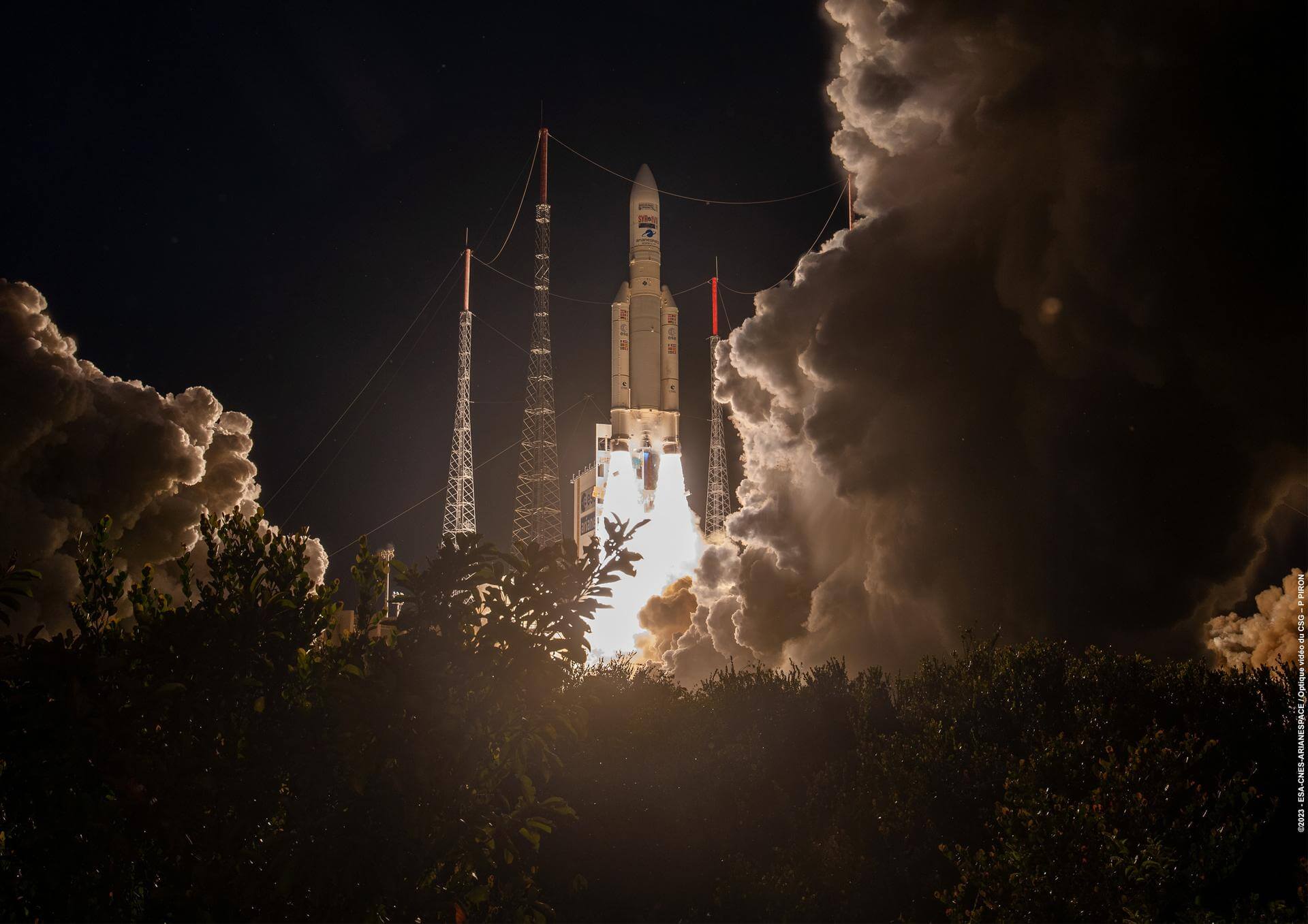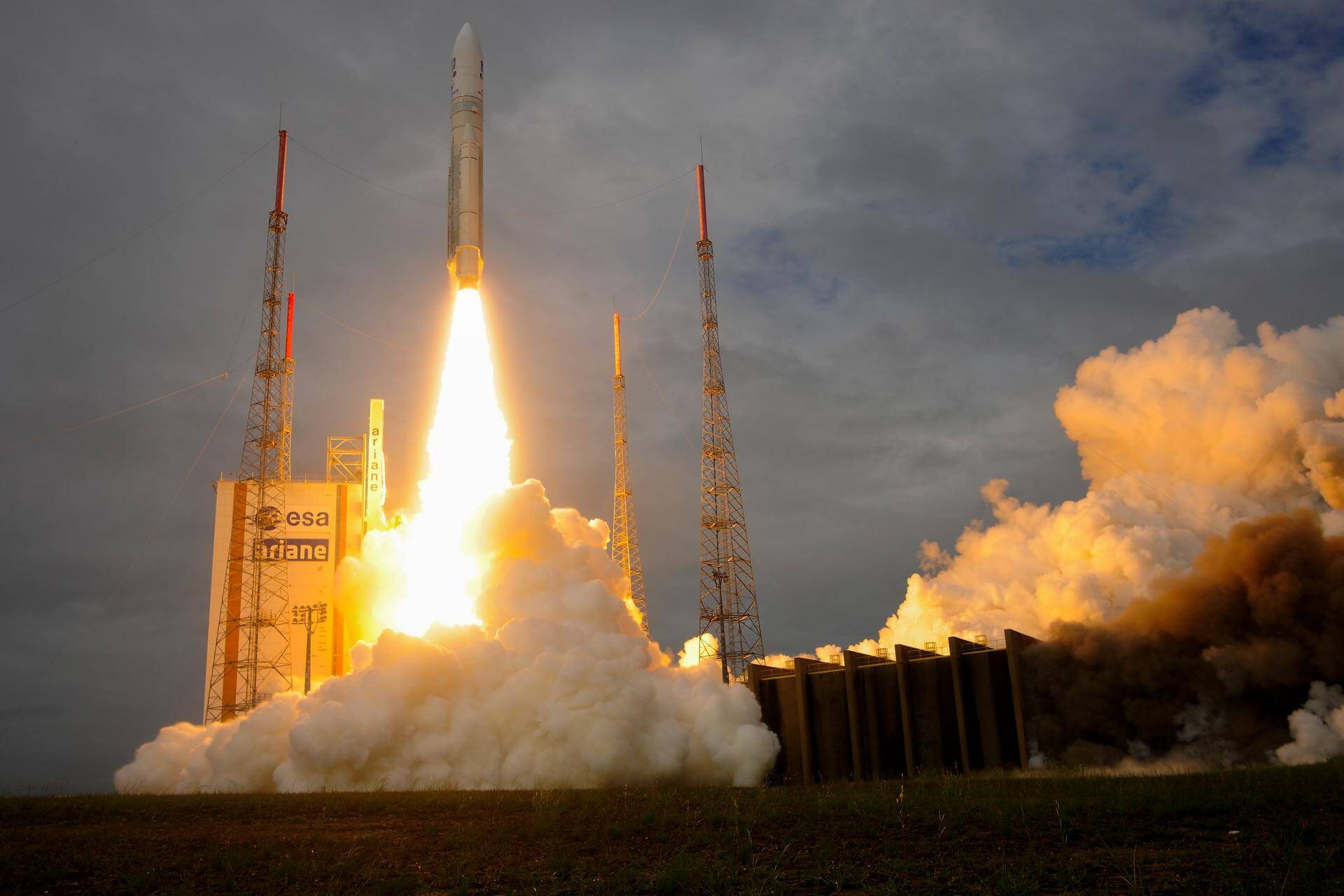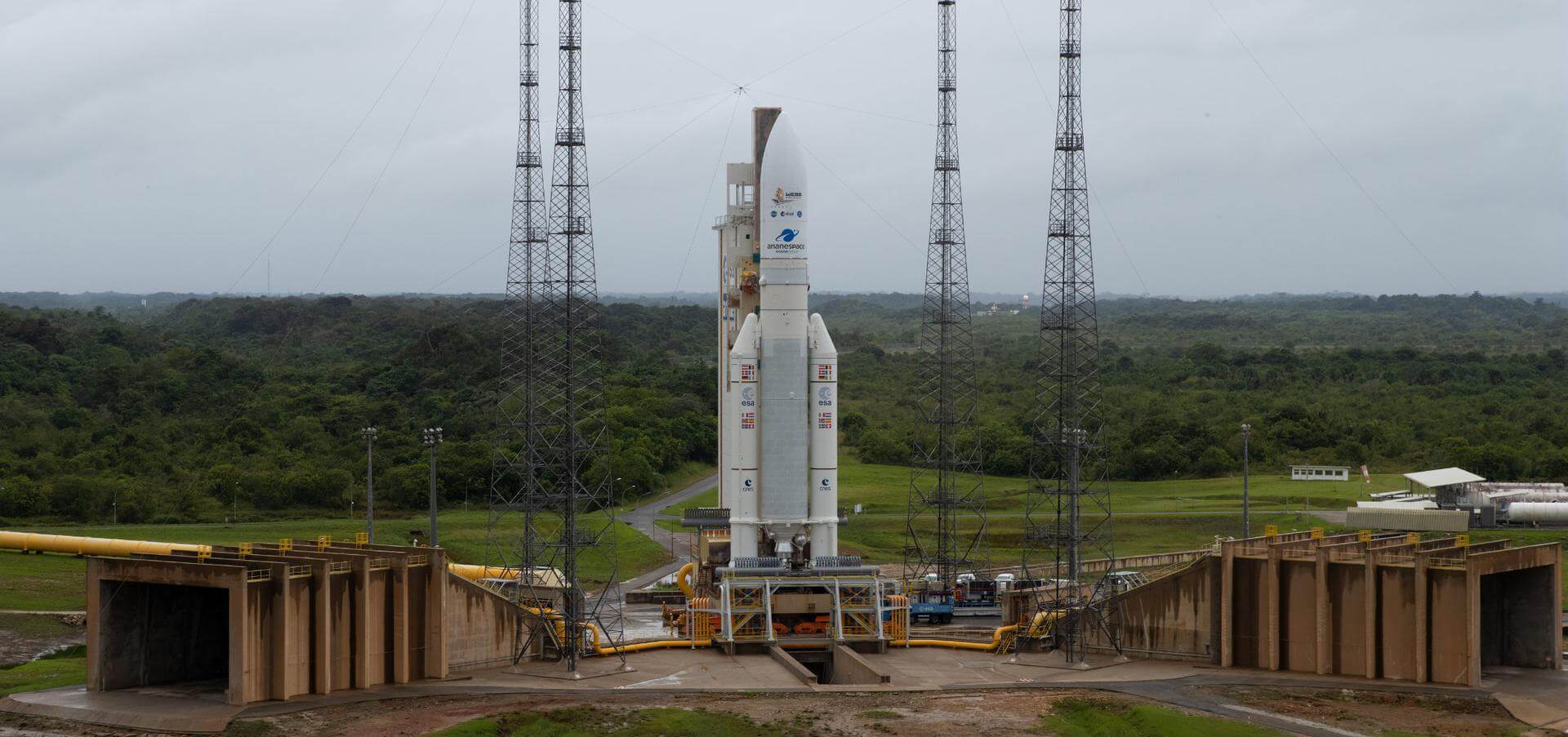Previous Spaceflight Launches
Filter by Agency, Locations or Vehicles
Show All LaunchesAriane 62 | Sentinel-1D
ArianeGroup | FranceGuiana Space Centre, French Guiana
Nov. 4, 2025, 9:02 p.m.
Ariane 62 | Metop-SG A1
ArianeGroup | FranceGuiana Space Centre, French Guiana
Aug. 13, 2025, 12:37 a.m.
Ariane 62 | CSO-3
ArianeGroup | FranceGuiana Space Centre, French Guiana
March 6, 2025, 4:24 p.m.
Ariane 62 | Maiden Flight
ArianeGroup | FranceGuiana Space Centre, French Guiana
July 9, 2024, 7 p.m.
Ariane 5 ECA+ | Syracuse 4B & Heinrich Hertz (H2Sat)
ArianeGroup | FranceGuiana Space Centre, French Guiana
July 5, 2023, 10 p.m.
Status: Launch Successful
Mission:
Syracuse 4B is a French military communications satellite built by Thales Alenia Space. Heinrich Hertz (H2Sat) is a small geostationary communications satellite built by OHB System and the German Aerospace Center (DLR) to explore and test new broadband communications technologies.
Geostationary Transfer OrbitAriane 5 ECA+ | JUICE (JUpiter ICy moons Explorer)
ArianeGroup | FranceGuiana Space Centre, French Guiana
April 14, 2023, 12:14 p.m.
Ariane 5 ECA+ | Galaxy 35 & 36, MTG-I1
ArianeGroup | FranceGuiana Space Centre, French Guiana
Dec. 13, 2022, 8:30 p.m.
Ariane 5 ECA+ | Eutelsat Konnect VHTS
ArianeGroup | FranceGuiana Space Centre, French Guiana
Sept. 7, 2022, 9:45 p.m.
Ariane 5 ECA+ | Measat-3d & GSAT 24
ArianeGroup | FranceGuiana Space Centre, French Guiana
June 22, 2022, 9:50 p.m.
Ariane 5 ECA+ | James Webb Space Telescope (JWST)
ArianeGroup | FranceGuiana Space Centre, French Guiana
Dec. 25, 2021, 12:20 p.m.
Status: Launch Successful
Mission:
The James Webb Space Telescope is a space telescope developed by NASA, ESA and CSA to succeed the Hubble Space Telescope as NASA's flagship astrophysics mission. Its primary mirror, the Optical Telescope Element, is composed of 18 hexagonal mirror segments which combine to create a 6.5 m diameter mirror, considerably larger than Hubble's 2.4 m mirror. This will allow JWST to provide improved infrared resolution and sensitivity over Hubble, and will enable a broad range of investigations across the fields of astronomy and cosmology, including observing some of the most distant events and objects in the universe, such as the formation of the first galaxies.
Sun-Earth L2





